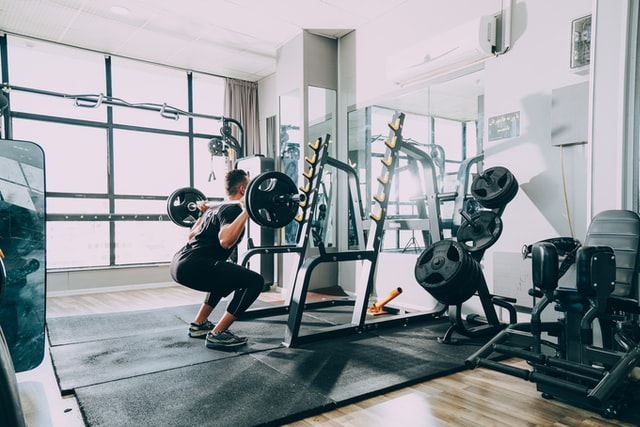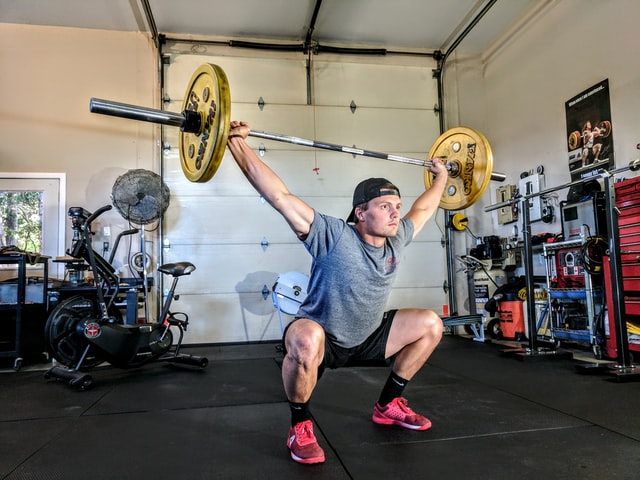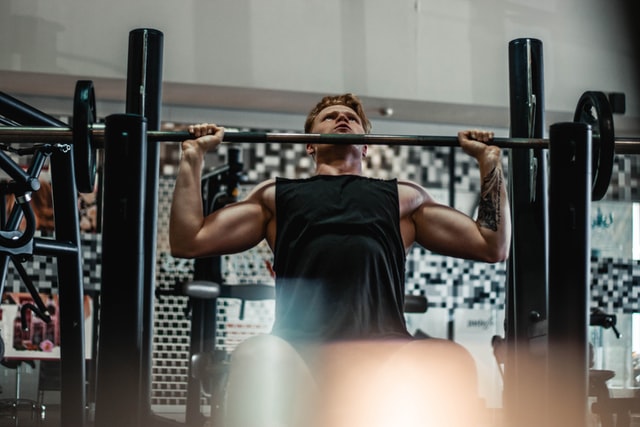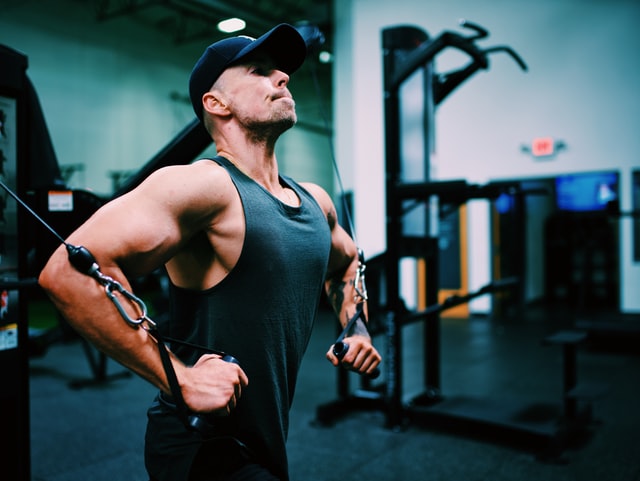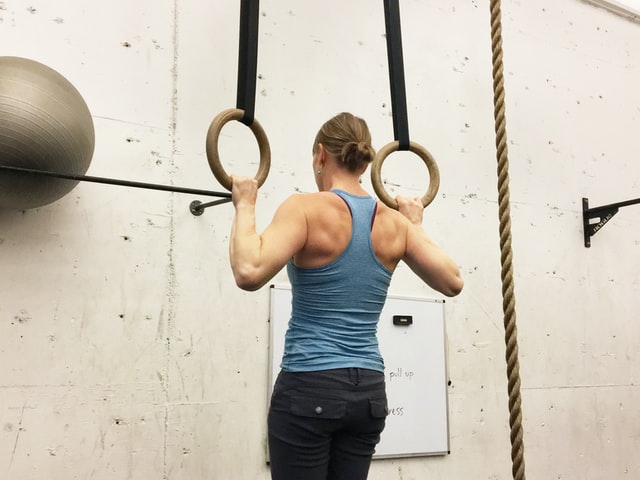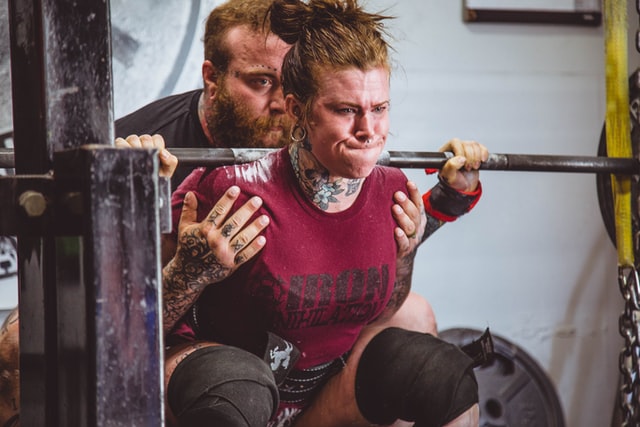Recommendations for strength training
This entry provides a detailed review of the different recommendations for strength training.
In this series of articles we deal with some of the most important concepts of strength training, collecting notes from the recently published book Strength, Speed and Physical and Sports Performance written by renowned researchers Juan José González Badillo and Juan Ribas Serna.
SUMMARY
- The only possible objective when strength training: Improve the speed of execution before any absolute load.
- Resistance to train: minimum individual percentage up to 95% of the 1RM.
- Repetitions per series: from 8-10 to 1.
- Character of the Effort: from 8-10 repetitions of 30-40 possible to 1 repetitions of 2-3 possible.
- Effort Index: Probably shouldn’t be higher than 20-22.
- Recovery between series: between 2 and 5 minutes.
If you intend to program strength training, the first thing that must be clear is what strength is being trained for. Although this first question is key and necessary, it is not sufficient knowledge since the problem of how to achieve those objectives remains to be solved. For now it is better to focus on the initial question:
Why train strength?
Single possible goal: Improve speed under any absolute load, including competition specific load. Given the relative loads, the speeds will always be practically stable. They could only be improved very slightly, until the minimum strength deficit of the subject was reached. The variation margin can be +-0.02/0.03 m*s-1 with the same relative load (real percentage of the RM), depending on the type of training performed.
This single objective, expressed in another way, would be equivalent to improving the maximum applied force under any absolute load, including the specific load. Naturally, this is so because by improving the maximum force applied to a certain load, the speed must necessarily improve proportionally.
If we consider only the specific loads, this single objective can be expressed as improving the useful force, which would be the same as improving the specific RFD, and both translate and are equivalent to improving speed before the specific load or competition load.
Single possible goal: Improve execution speed under any absolute load
These improvements can be given in:
- Discrete or isolated specific actions, which correspond to generally acyclic actions, of short duration and high or maximum absolute speed of execution or movement
- Repeated specific actions, which correspond to cyclical or mixed actions, which are carried out at a specific time (typical of the competition). In these cases, the improvement in strength is expressed as an increase in the average speed of execution or displacement in the total time that the action lasts or in the distance to be traveled by any means on which the propulsion depends totally or to a great extent. of muscle action.
When dealing with mixed actions, the improvement is expressed in the same way as the cyclical ones, but it is also manifested as an improvement in speed in the discrete actions that can be carried out during the course of the sporting action.
In short, whenever you train with a single possible objective: to improve speed at the same absolute load or, in other words, to improve the maximum force applied at the same absolute load. The exception, as indicated, is Weightlifting, which never improves speed at the maximum competition load but maintains the same speed at increasing loads.
However, in this sport the objective applied to other sports is also met, but in the event of any absolute load less than the maximum. In other words, the improvement in speed for the same absolute load that is not the maximum that the subject can lift will mean an improvement in performance, which will translate into an improvement in the maximum load that can be lifted in an exercise at the same speed. (speed typical of competition exercises)
If the speed improves with what is considered the maximum load, it is because it is not the maximum load, and, therefore, this means that you will be able to lift another somewhat larger load. The speed with the maximum load cannot be improved because it is the own speed of the RM of the exercise in question.
How can you strength train?
Strength training has three options:
- Train with non-specific but useful exercises. This would have as its objective and effect the improvement of the maximum force applied before any load, and even, due to the fact of being useful exercises, it should have a positive effect for the improvement of speed before the specific competition load.
- Train with the competition exercise or with one very similar, but with extra opposition to the movement. Given the similarity that the exercise used is supposed to have with the competition exercise, we could call this alternative specific strength training.
- Train with the competition exercise. This type of training has never been called, and probably never will be, called strength training, but it is certainly a very important route to strength improvement. Naturally, in this case we could also call it specific strength training.
Training for the improvement of maximum strength and RFD with non-specific but useful exercises
training goal
Improve the maximum force applied to any load, including the competition load. It is nothing more than repeating the objective of strength training, how could it be otherwise. However, it would be pertinent to add that in this improvement of the maximum force applied each, the improvement of the RFD must necessarily be included. All training that produces an improvement in the maximum force applied to a load necessarily implies an improvement in the RFD: if the same load moves faster, it will be because more force has been applied to it in less time, since the distance is the same, and this is nothing more than improving the RFD: improvement of force production in the unit of time.
This will always happen. It doesn’t make any sense, and it would be an inadmissible mistake, to say, pretend, propose… that “maximum force” is going to be trained, not RFD (in training jargon it is more likely that “explosive force” would be said in instead of RFD, but has the same meaning).

Naturally, the way of training, especially the degree of fatigue generated in the series, may cause greater effects when faced with some magnitudes of loads than with others, that is, with some speed values than with others, and for this reason the RFD can improve more before some loads or others. If before light loads the maximum force applied does not improve, that is to say, if the speed does not improve before these loads, the RFD will not improve either, it can improve more before some loads and others. If the maximum applied force does not improve with light loads, that is, the speed does not improve with these loads, the RFD will not improve with these loads either, but if after that same training the maximum applied force improves with high loads, the RFD will have also improved under those loads.
It must be taken into account that the maximum RFD can be reached without the need for displacement. Therefore, training cannot be identified exclusively with the use of very light loads or with very fast movements. The improvement of the RFD is more related to the intention of applying the maximum force in the unit of time – (Behm and Sale, 1993) than to the resistance against which it acts.
The RFD can be trained with any load as long as the force production per unit of time is the maximum possible in each action.
The RFD can be trained with any load as long as the force production per unit of time is the maximum possible in each action. In this case, if the muscle activations are dynamic, the movement speed must be the maximum. Each magnitude of load, and therefore each speed of execution, may have specific ways of improving performance, such as greater or less hypertrophy when fatigue is high and the final speed in the series is low, or using light loads and few repetitions. and achieve positive effects at high speeds (maximum force applied) by a specific adaptation.
If the speed is the maximum, both the training with light and high loads produces a great neural activation, improving the stimulus frequency in both cases (Van Cutsem et al., 1998), which gives rise to a greater production of force in the time unit (RFD).
Therefore, the muscular adaptations that favor RFD are achieved with both light and high loads, which is necessarily accompanied by an improvement in the maximum applied force. Probably, the use of both types of loads is the most effective, and this, in fact, has been observed experimentally, for example, in vertical jump training (Adams et al. 1992; Fatouros et al., 2000).

Resistances or training loads to use
Anything from the minimum individual percentage, which can be extremely low, up to 90-95% of 1RM. This does not mean that all athletes or people must reach the maximum percentages indicated. Understand that “percentage” is a “degree of effort”, which is defined with high precision when determined by speed. Any resistance beyond what is commonly used could result in an increase in maximum strength. Thus the minimum percentage that would be useful to a subject cannot be determined, but in some cases it may be a very small burden. As strength potential develops, the greater the minimum percentage of training required to produce an appreciable effect is likely to be.
However, it must be remembered that the relative training intensity should not be increased as long as the increase in absolute load is sufficient for performance improvement. And we would even be in the best situation if increasing the absolute intensity, the relative intensity tends to evolve in regression.
When talking about training programming based on the needs of sports specialties, the theoretical evolution of relative intensity and other load indicators will be specified.
Repetitions per set to be performed
From 8-10 to 1. It is practically neither necessary nor desirable to go outside of this small range of repetitions per set. Although this variable is indicated only as a reference, since, as indicated, the number of repetitions should not be programmed if the speed of execution can be measured in each repetition.
The number of repetitions that each person performs will depend on the loss of speed in the programmed series.
The number of repetitions that each person performs will depend on the loss of speed in the programmed series. We know that if all the subjects did the same repetitions per set, a significant part of them would do a different training than the majority.
From 8-10 (30-40) to 1 (2-3). It is in line with the percentages and average repetitions indicated in the two previous points, and, therefore, it does not mean that all people should reach the CE with fewer possible repetitions (number in brackets) than those proposed.
Therefore, for its correct interpretation, the indications made in this regard above must be followed. What should be added here is that, according to the numbers of this CE, the maximum possible number of repetitions in the series is never reached. Speed loss in the series From 10 to 25-35% of the speed of the first repetition in the series, depending on the exercises.
the maximum possible number of repetitions in the series is never reached
This variable includes the repetitions per series and the CE: the number of repetitions per series depends on the programmed loss of speed and the characteristics of the subject, and the CE is defined by the percentage of repetitions performed before a certain loss of speed , which will be practically the same for all subjects. The maximum losses are not applicable to all subjects or to any subject when they start their sporting life
It probably shouldn’t be higher than 20-22. More information is needed when talking about the adaptation of training to the strength needs of the different specialties. It is worth remembering that training with light loads does not mean that the IE is lower, and therefore, it must be taken into account that for the same IE, the lower the relative intensity, the lower the loss of speed in the series.
recovery between sets
2-5 minutes. The recovery time will depend on the degree of fatigue generated in the series and the speed of the last repetition in the series. At medium and low loads, the determining factor is the fatigue generated. Before high loads it is the speed of the last repetition, even if the fatigue is not so high.
The recovery time will depend on the degree of fatigue generated in the series and the speed of the last repetition in the series.
execution speed
Maximum or close to the maximum possible before each resistance or weight.
Weekly frequency
From 1 to 3-4 times, but not more than 2 times the same exercise. As long as the muscle activation is done at the maximum speed of muscle shortening or at the maximum tension production in the unit of time, in such a way that the aim is to reach the maximum slope in the force-time curve before any useful and non-specific load. of training.
Target duration of this type of training
the whole cycle
fundamental exercise
Non-specific useful exercises. Some of these exercises are included in the section on training different exercises.
Train with the competition exercise or with one very similar, but with an extra opposition to the movement: specific strength
Training objective
Improvement of the force applied in the competition gesture. This implies improving the maximum force applied to the competition load, as well as improving the specific RFD. All of which can be expressed as improvement of the useful force: the force that allows to improve the specific performance.
Loads or degree of opposition to movement.
Slightly higher than the resistance (load) typical of competition. The magnitude of this extra load is not sufficiently defined, but it probably should not be high enough to interfere with technique. In addition, it may be more favorable for more than one magnitude of resistance to be used at different times of the cycle, although always respecting not to deviate excessively from the dynamics of technical execution (characteristic of the evolution of the force applied when performing the gesture of competition).
Perhaps the best reference to determine the load is the quantification of the loss of speed produced by the extra load applied with respect to the speed of execution without load. The question remains for future experimental investigations that can provide an answer to what are the most appropriate values of loss of speed, and therefore, of extra load.
Apart from adjusting to these load indicators, it is convenient to take into account other aspects when carrying out this type of training, that failure to comply with them makes the training useless and even negative. For example, running in a straight line with drags can be more positive than doing with weighted vests, because it adjusts more to the characteristics of the race and reduces less impact on the joints.
running in a straight line with drags can be more positive than doing with weighted vests, because it adjusts more to the characteristics of the race and reduces less impact on the joints
In this way, the opposition to displacement is constant and acts during the moments of application of force in the concentric phase of each support —a determining phase in the speed of displacement—, while with the vests the eccentric phases are also overloaded, apart from the very inertia created by the weight of the thrown vest, in motion, which can introduce a strange variable in the coordination of the race.
However, if you run with changes of direction, you should use a vest or weights held with your hands, because the effect you are looking for is not only in the start of each action and in the concentric actions, but also in the braking — eccentric action— for the change of direction and sense, favoring that at the critical moment of these movements, when the RFD must be and needs to be greater, the action is hindered sufficiently, although not excessively, by the load extra added.

Apart from these possible benefits, the negative effects are minor, since the maximum speed that is reached is very low in this type of exercise. However, it is not positive to use weighted vests when doing other exercises considered specific, such as, for example, small games in soccer, because this implies, on the one hand, prolonged efforts with an extra load that can generate excessive cardiorespiratory and joint fatigue, and, above all, because it interferes with technical gestures, upsetting the relationship between distances , actuation times and displacements of the mobiles, both in acceleration and deceleration actions.
it is not positive to use weighted vests when doing other exercises considered specific
In other cases, such as hitting the ball with heavy rackets, the effect can be negative due to the serious interference it would have with the technique. Therefore, the gestures intended to improve the force of the hit through the gesture itself should not be done with ball hits, but by performing the gestures only with the heavy racket. And once recovered from these exercises, which should cause very little fatigue, in the same session the ball should be hit with a normal racket and progressive speed until the technique is adjusted again.
Another example also applicable to tennis and many other sports is the use of rubber bands as a way of resisting the execution of movements. This is a serious mistake, because the rubber does not offer resistance to movement in the initial phase of any action, but when there has already been a displacement and the speed has increased, precisely in the phase of the specific action in which less is applied. force of the entire stroke, due precisely to the high speed of the action.
Using rubber bands as a way to oppose resistance is a mistake because the rubber band does not offer resistance to movement in the initial phase of any action, but rather when there has already been a move and speed has increased.
Therefore, in the limiting phase of the action, which is the first 100-200 milliseconds before starting the movement, static or isometric phase of the action, and in the first milliseconds of the dynamic phase of the movement, the rubber is not doing no opposition, then it has no effect as an extra charge, but also when the important thing is to be capable and apply more force at a higher speed in the thrown phase of the movement (improvement of RFD at high speeds, the most difficult thing to improve) , the rubber does not allow this capacity to be trained, since the speed is low, it cannot increase, since the greater tension of the rubber prevents it.
In short, something truly counterproductive for what it does not contribute and for what it interferes with.
Another example, if a tennis player is tied a rubber band around his waist so that he can go up to the net to hit the ball and quickly return to the bottom line to repeat the action, the effect that is being produced it is partly null and largely negative. Null because the rubber does not intervene in the start of the race towards the net, a critical phase of the action, and negative because it facilitates braking when approaching the net (opposite effect to what is intended with any exercise with extra added load) and misaligns the phase of approach to the ball, decisive in the proper hitting to pass and place the ball.
The exercises considered as “specific” can cause some cases more damage than those not considered as such, and, in the best of cases, be useless.
In addition, when you return to the bottom of the track, the rubber helps you, it never acts as an extra load, but quite the opposite, as a force that facilitates the action. Actions with soccer goalkeepers that are tied to the posts with rubber bands and other similar ones have the same drawbacks.
Definitely, the exercises considered as “specific” can cause some cases more damage than those not considered as such, and, in the best of cases, be useless.
repetitions per series.
As a general rule, less repetitions than those carried out during the competition or less distance or less time, depending on the case. The objective and the reference is that there is no high fatigue and, therefore, that during the totality of the actions a significant speed is not lost from the first to the last action or repetition. Keep in mind that the goal is to improve strength, not “endurance”, although, naturally, the improvement in strength will always have a positive effect on endurance (more average speed for the same load and time or distance).
Character of the effort
It is determined by speed: slight loss of speed in the series and between series. Decreasing speed between sets or repetitions will mean reduced force applied (peak force and RFD). If possible, other criteria should be included, such as the dynamics of the execution of the technique.
Weekly frequency
As a general rule, 1-2 times a week, but this training will be applied whenever the muscle activation is done at the maximum speed of muscle shortening, in such a way that it is a question of reaching the maximum slope in the force-time curve before the competition exercise or one very similar.
Exercises:
Their own or similar.

